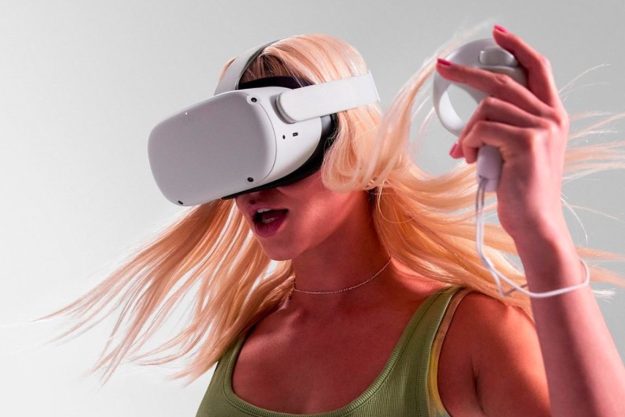
We don’t often pit budget-priced competitors against ultra-premium technology, but the internet is buzzing over comparisons between Meta’s Quest 3 and Apple’s Vision Pro. Surprisingly, the $3,000 price difference isn’t the only reason that some people favor the Quest 3 over the Vision Pro.
Whether you think of the Vision Pro as a spatial computer or a VR headset, there’s plenty of overlap in the Quest 3’s feature set that makes it worth checking out. You might find everything you want at one-seventh the price.
Where the Vision Pro wins
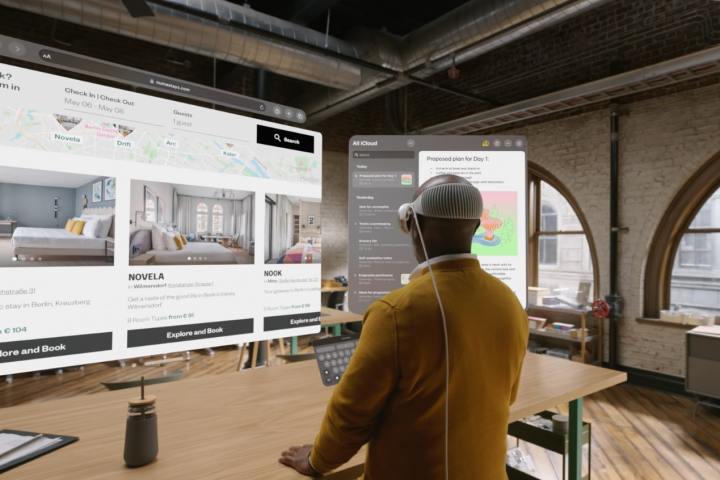
The Vision Pro’s display resolution is 3660×3200 pixels per eye according to the second installment of iFixit’s teardown of the Vision Pro. Apple simply states it contains 23 million pixels. That’s about two-and-a-half times the number of pixels in the Quest 3’s screens.
The M2 processor gives the Vision Pro great performance that matches many desktop computers. It’s the same chip used in the base Mac mini and the MacBook Air. Apple added an R1 chip to handle tracking, so the M2 is free to focus on graphics processing and running apps. There’s a lot of technology packed in tightly, so the thermal limits are probably restrictive. A Geekbench performance test showed the Vision Pro scoring 80% to 90% of an M2 iPad’s speed. By comparison, the Quest 3’s Qualcomm Snapdragon XR2 Gen 2 processor is closer to the performance of an Android phone.
Apple wanted the Vision Pro user interface to look and feel familiar, and visionOS will make sense if you use an iPhone, an iPad, or a Mac. While its windows hover in midair, using the Vision Pro is not that different from using an iPad. You just have to get used to the look-and-pinch technique. The Quest 3 runs a heavily modified version of Android, and it takes time to figure out where to find things.
The Vision Pro has the Safari browser and it can run web apps with no issues. You can open multiple windows in various sizes and place them anywhere. Since so much is possible in a modern browser, this unlocks more productivity. The Vision Pro’s Safari browser is one of the most impressive and overlooked wins for Apple’s first VR headset. The Meta Quest 3 browser is getting better, but still doesn’t fully support Google Workspace or Microsoft 365.
Where the Quest 3 wins
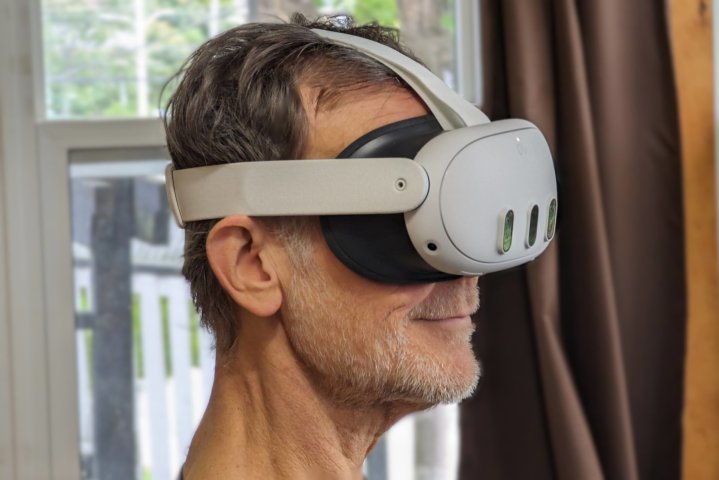
The Quest 3 was designed for VR gaming, and several impressive titles were available at launch. The Quest 3 comes with Asgard’s Wrath 2, a AAA action adventure with around 60 hours of gameplay. There are hundreds of immersive games in Meta’s app store and more are available via SideQuest. You can also connect wirelessly to your VR-ready PC to play SteamVR games like Half-Life: Alyx. The Vision Pro doesn’t include any games and the number of spatial games is very limited.
Meta includes two high-quality VR controllers with the Quest 3, each with a thumbstick, two triggers, four thumb buttons, and haptic feedback. The controllers track and position in 3D space with sufficient speed and accuracy for fast-paced gaming in first-person shooters, racing and boxing games, and various simulations. The Vision Pro doesn’t support VR controllers, but you can pair a PlayStation DualSense controller to play games in a 2D window.
The Quest 3 is a fairly light 18 ounces thanks to its plastic body, lack of a front display, and less demanding hardware. Not including the weight of the Vision Pro’s 12-ounce battery, the heft is still nearly a pound and a half at 23 ounces. The five-ounce difference in weight doesn’t sound like much, but it can become painful and leave marks within a half-hour.
Other features
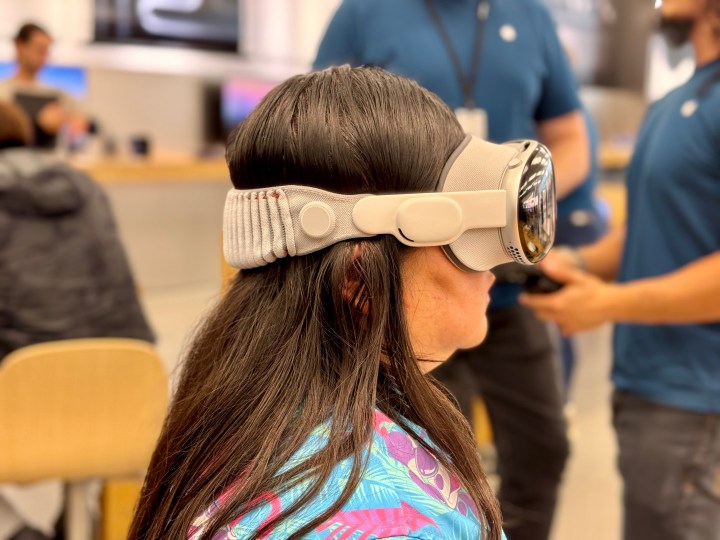
Apple’s visionOS interface is impressive, and using your eyes and fingers to navigate seems like a magical experience. In practice, there can be some frustration since the Vision Pro reacts to any hand movement, even that of other people. When you want to type on the built-in virtual keyboard, you can only use your index fingers.
Meta’s Quest 3 works with controllers, but you can also use your hands. You can type text with index fingers, just like with the Vision Pro, but the Quest 3 also lets you swipe across the keys to enter words like you can on your phone. Swipe entry is much faster, particularly when pointing with a controller.
For distant windows and controls, you use point-and-pinch instead of look-and-pinch. Meta’s hand-tracking is just as good as Apple’s and has lower latency, as you can see in Dennys Kuhnert’s video on X.
Hand tracking side-by-side comparison 🙌
Top: Apple Vision Pro
Bottom: Meta Quest 3 pic.twitter.com/ZvOWm02FEK— Dennys Kuhnert (@DennysKuhnert) February 20, 2024
When virtual screens and controls are close, you can directly “touch” them with your hands. That works on both the Meta Quest 3 and the Apple Vision Pro. I find this to be one of the most intuitive ways to use a virtual interface since it’s reminiscent of using the touchscreen of a large tablet.
While the Vision Pro’s screen resolution is much higher than the Quest 3’s, it’s not problem-free. Many reviewers mention motion blur in the passthrough cameras due to a slow shutter speed. OLED displays also suffer from motion blur in graphics since the organic elements have a longer persistence.
Apple’s pancake lenses have excellent clarity in the center, but I’ve come across several comments about blurriness and color fringing at the edges. Some reviewers notice a letterbox effect from the Vision Pro’s smaller vertical field of view. The Quest 3’s display isn’t perfect, and the sharpness is lower overall, but there isn’t an obvious loss of quality if you look up or to the sides of the screen.
Quest 3 vs. Vision Pro buzz
To give you an idea of how popular this matchup is, Nathan Espinoza got 3.6 million views on YouTube for a 34-second comparison of the Quest 3 and the Vision Pro. Espinoza mentioned the sharper screens on the Vision Pro, but noted the advantages of the Quest 3’s controllers and lighter weight. His summary recommended the Quest 3 for gaming and Vision Pro as the best VR headset.
Meta CEO Mark Zuckerberg shared his opinion, pointing out some of the same details mentioned above. Zuckerberg’s Instagram post comparing the Quest 3 and Vision Pro went viral, collecting over 200,000 likes, and stirring up media coverage.
Which is right for you?
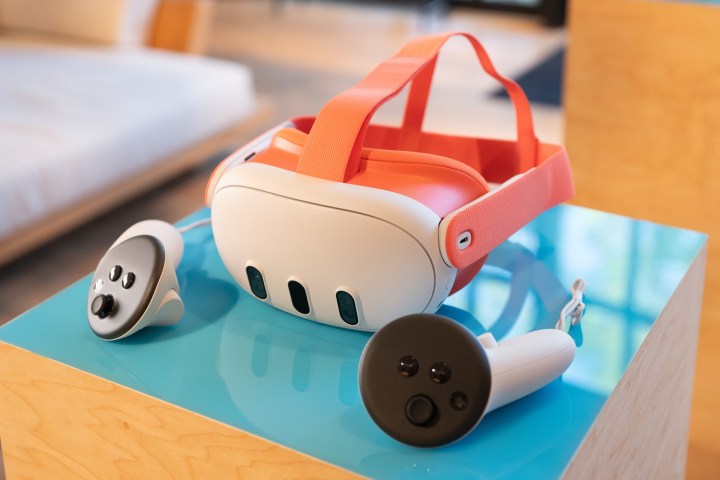
The Quest 3 and Vision Pro are great examples of high-quality VR headsets and both are worthy of consideration. If you can afford the Vision Pro, you should also pick up a Quest 3 to compare for yourself and enjoy the greater selection of VR games.
If the Vision Pro stretches your budget too tight, don’t stress about it. You’ll love the Quest 3 and have money left over to build a nice library of apps and games.
Apple is committed to spatial computing and will undoubtedly make a lighter and more affordable version of the Vision Pro. Meta will keep pushing to make the metaverse a reality, with VR headsets and AR glasses for the masses. I wouldn’t be surprised to see a more advanced version of the Quest 3 arrive in the form of a Quest Pro 2 in the next several months.
The marketplace is big enough for these two tech giants and many others. Apple’s Vision Pro has inspired competitors to develop spatial computers of their own, and 2024 will be great for VR and set the stage for light and powerful AR glasses in the future.
Editors' Recommendations
- A free update just made the Quest 3 way better
- Best VR headset Memorial Day deals: save on Meta Quest 2, HTC VIVE XR Elite
- How to cast Meta Quest 3 to a TV
- Best Meta Quest 3 deals: Get Asgard Wrath 2 for free and more
- 5 headsets you should buy instead of the Vision Pro


